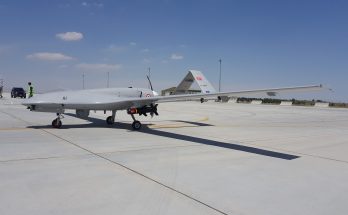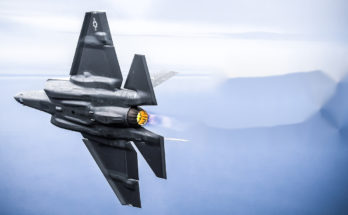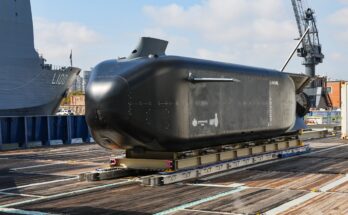by Dan Darling, International Military Markets Analyst, Forecast International.
India’s Finance Minister Arun Jaitley unveiled the government’s fiscal year 2018 Union Budget on February 1. Included within the budget is a year-on-year nominal increase of 5.91 percent for defense. The latest outlay marks the fourth consecutive increase by the government of Prime Minister Narendra Modi and pushes India’s topline defense budget from its 2017 revised estimate of INR2.79 trillion ($43.6 billion) up to INR2.96 trillion ($46 billion) for 2018.
On the surface this appears to be positive news for India’s military. But India’s defense budget picture is far more complex than a simple topline figure.
Burrow deeper into the budget and the upward trend in core defense investment is less than meets the eye.
For starters, the Defence Ministry must use its yearly funding allocation to feed, clothe, house, equip, train and deploy a 1.4-million-strong full-spectrum military.
The Indian military must be capable of tackling missions both internally and across the Indian Ocean Region (IOR) while also preparing to defend the homeland against potential conflict from two neighboring rivals, Pakistan and China. With the latter two countries growing closer in bilateral relations and tying themselves together strategically, this formerly bifurcated threat has gradually intertwined, thereby swelling to a greater singular dilemma for Indian strategic policymakers: the potential for a simultaneous two-front war.
The task for defense policy makers, therefore, is to manage the military on a day-to-day basis while preparing for potential threats over the horizon.
Maintenance of its large standing military requires the bulk of India’s overall defense budget – referred to in Indian budgetary terms as Revenue (Net) expenditure. For 2018 this amounts to INR1.96 trillion ($30.7 billion), or 66 percent of total funding provided. With Indian soldiers having openly complained about poor working conditions and inadequate care in the past, this aspect of investment is critical in relation to recruiting and retaining military personnel and ensuring a healthy level of morale.
Yet this earmark – called Pay and Allowance – only accounts for one element of Revenue expenditure. Other elements include Headline Accounts for Transportation (movement of soldiers and gear from base to base), Storage (for equipment, ammunition, fuel and foodstuffs), Repair and Refit (for Navy equipment only), and Works (infrastructure upkeep), plus additional costs under the Miscellaneous tag.
Currently the Indian Army faces severe shortages of ammunition, so much so that the country’s Comptroller and Auditor General (CAG) noted in its March 2017 report that it would have just 60 percent of the ammunition required to fight a 10-day war. Yet the budget to plug this gap will hardly rise in 2018. Instead, what the Army will not be receiving in top-up funding under its FY18 Revenue earmark to fill this ammunition shortfall it will receive in higher Pay and Allowance funding. Thus the cost of manpower is eating into other budgetary areas.
This brings us to the second core aspect of the budget – the capital outlay, or Capital Head.
The Capital Head portion of the budget represents funding earmarked for major equipment platforms and military hardware, as well as the creation of infrastructure (roads, airstrips, barracks, depots, naval bases, etc.) which also may (or may not) include the acquisition of land/property on which to build the infrastructure.
Under the 2018 defense budgetary allocation, the Capital Head account amounts to INR995 billion ($15.6 billion), an increase year-on-year of about INR80 billion, or 8.8 percent.
While a significant amount on paper, this total is largely absorbed by paying off legacy contracts rather than being apportioned to new, pressing materiel requirements (up to 80 percent of the Capital Head budget is generally assigned to covering costs for “committed liabilities,” or programs underway or already completed).
Even worse, the Capital Head share of the defense budget has declined from nearly 44 percent in fiscal year 2007-08, to 36 percent in 2015-16, and now just 33 percent.
When one factors in defense inflation (the natural outgrowth of pouring more resources into acquiring higher-end technologies and hardware that are complex and difficult to maintain) and any fluctuation in the national currency on global foreign exchange markets, the Capital Head is declining not only as a slice of the budgetary pie, but in actual value.
Under a normal modernization cycle this might prove acceptable, but India has a slew of capital-intensive procurement projects stretching across all three major service branches.
The Indian Defence Ministry’s Long-Term Integrated Perspective Plan (LTIPP) launched in 2012 outlines rearmament and equipment acquisition requirements through 2027. For the period from mid-2016 onward, these requirements are expected to total an eye-watering $230 billion in procurement costs, or over $19 billion per year.
To begin tackling this steep investment climb and prepare to meet a conjoined threat from China and Pakistan, the armed forces have sought an allocation of INR26.84 trillion ($419 billion) over a consolidated five-year period (2017-2022) as part of their 13th Defence Plan. This would come out to $83.8 billion per annum, with INR12.89 trillion ($201 billion), or 48 percent of the total request, earmarked for the Capital Head outlay.
The chance of this request being granted by the Finance Ministry is slim to none. Earlier such requests in five-year Defence Plans were denied approval and, despite a looming general election to be held no later than May 2019, it is unlikely this one will be given the go-ahead either.
Instead the Modi government will continue with its “Make in India” defense acquisition efforts aimed at indigenization and growing the local defense sector through technology transfer and localized “strategic partner” workshare arrangements in large capital acquisitions through foreign vendors.
This approach, however, has failed to jump-start a major defense program since becoming the thrust of the Modi government’s defense procurement process, despite some INR3.5 trillion ($54.8 billion) tied up in six different mega-projects.
Taken altogether, India’s defense budget – already one of the 10 largest in the world – remains far below what is required of its military and the country’s broader regional and global ambitions. While asking the government to nearly double the annual defense budget might be too tall an order, hiking the Capital Head portion of the budget by 20 percent (thereby bringing it to around $18.5 billion) would allow India to move forward on several crucial projects that currently remain little more than part of an expensive military wish-list.
A counter-argument could be made that such additional funding may go unspent, as has happened in three of the previous four fiscal years, or spent unwisely by a Defence Ministry prone to financial mismanagement.
But with an Air Force struggling to meet fighter capability and capacity benchmarks, a Navy scrambling to meet future Carrier Battle Group requirements while suffering from fleet age and obsolescence issues, and an Army still in the process of raising a Mountain Strike Corps and building crucial infrastructure in key border areas to defend against Chinese incursions, time is not on India’s side – at least not if it hopes to meet the aspirations of the Modi government and become an international powerhouse.
Please feel free to use this content with Forecast International and analyst attributions, along with a link to the article. Contact Ray Peterson at +1 (203) 426-0800 or via email at ray.peterson@forecast1.com for additional analysis.
The Forecast International International Military Markets series examines the military capabilities, equipment requirements, and force structures inventories of 140 countries, with corresponding coverage of the political and economic trends shaping the defense market outlook for individual countries and regions.
For 50 years, Forecast International intelligence reports have been the aerospace and defense industry standard for accurate research, analysis, and projections. Our experienced analysts compile, evaluate, and present accurate data for decision makers. FI's market research reports offer concise analysis of individual programs and identify market opportunities. Each report includes a program overview, detailed statistics, recent developments and a competitive analysis, culminating in production forecasts spanning 10 or 15 years. Let our market intelligence reports be a key part of reducing uncertainties and mastering your specific market and its growth potential. Find out more at www.forecastinternational.com



